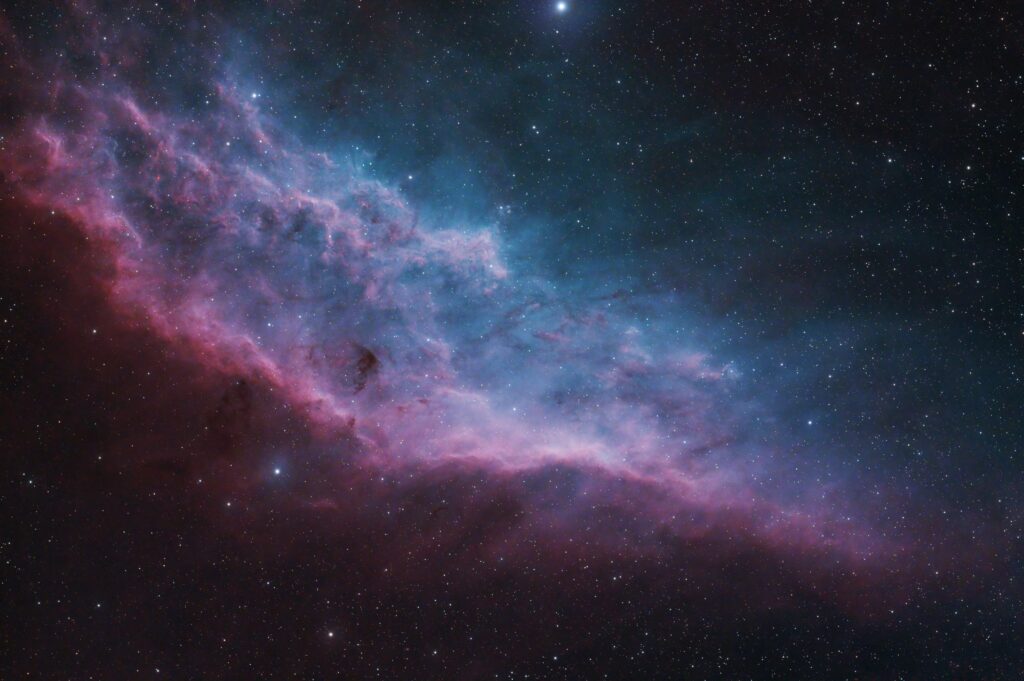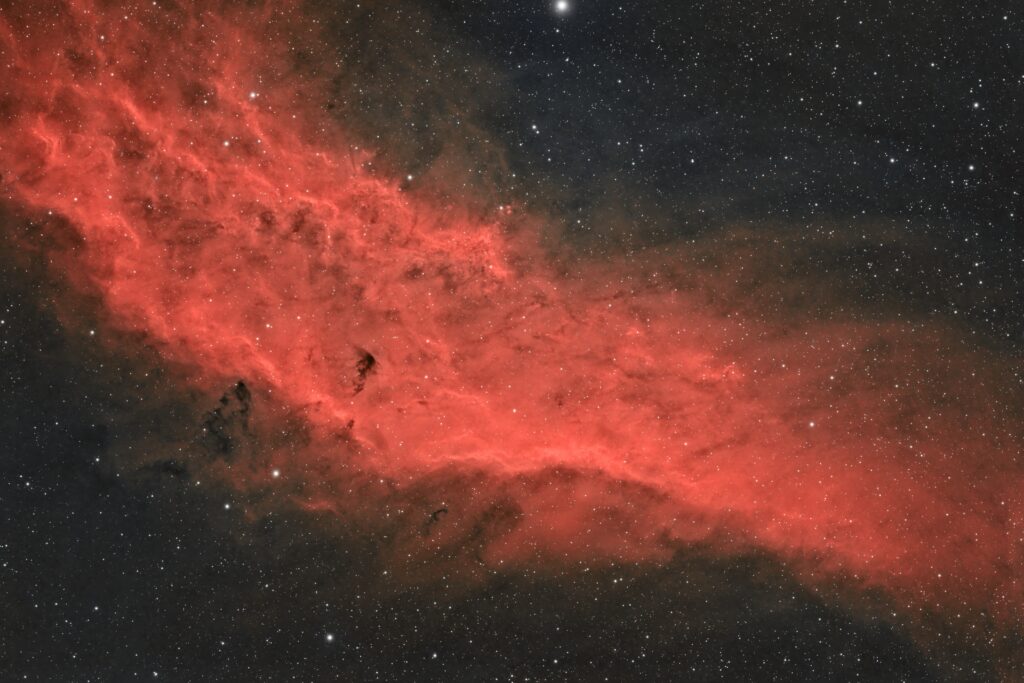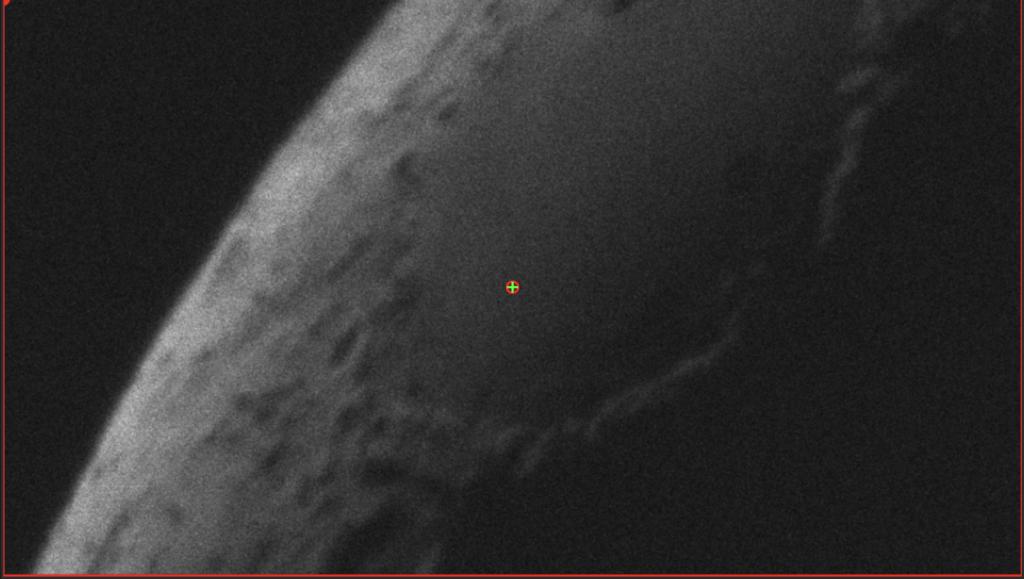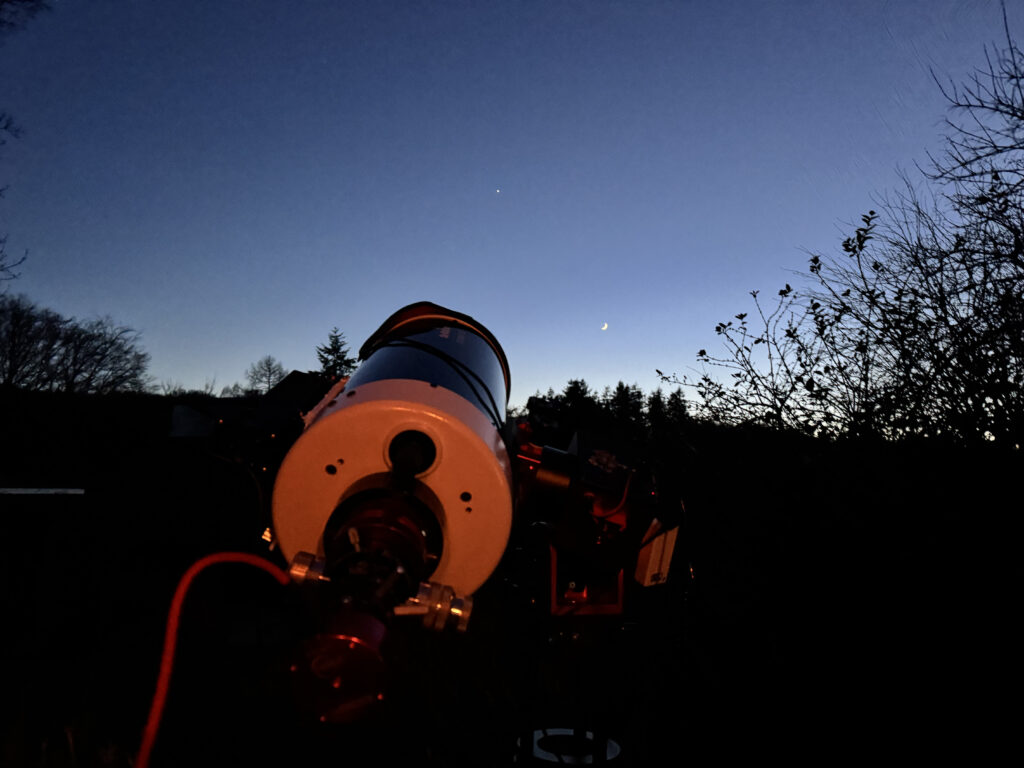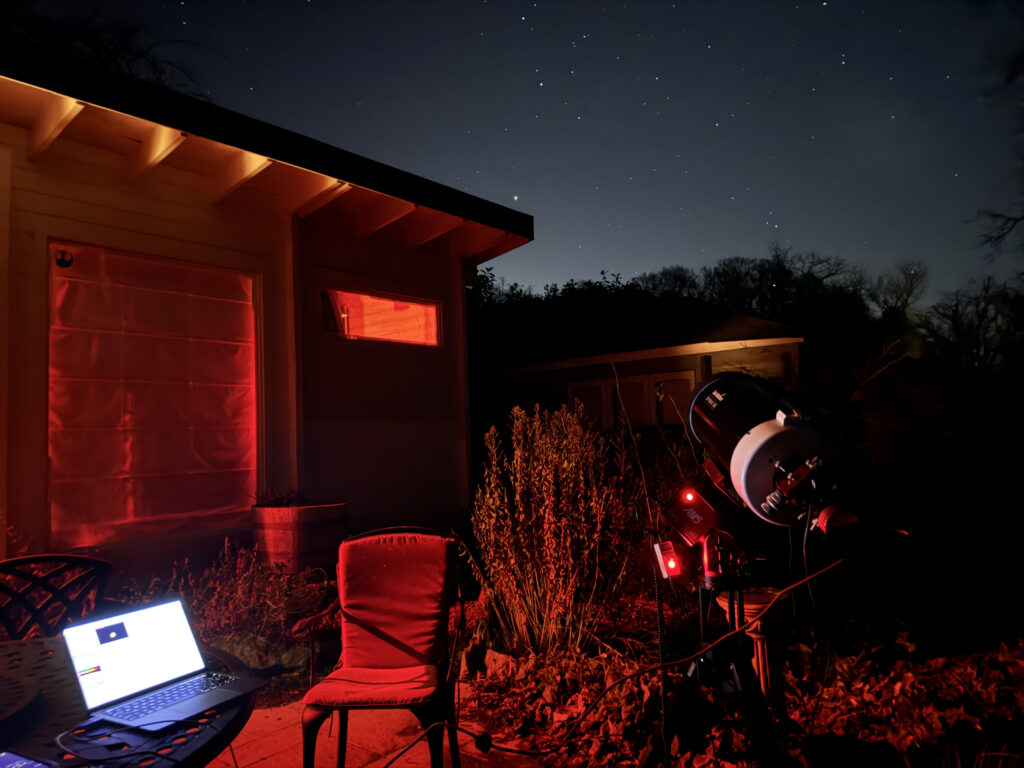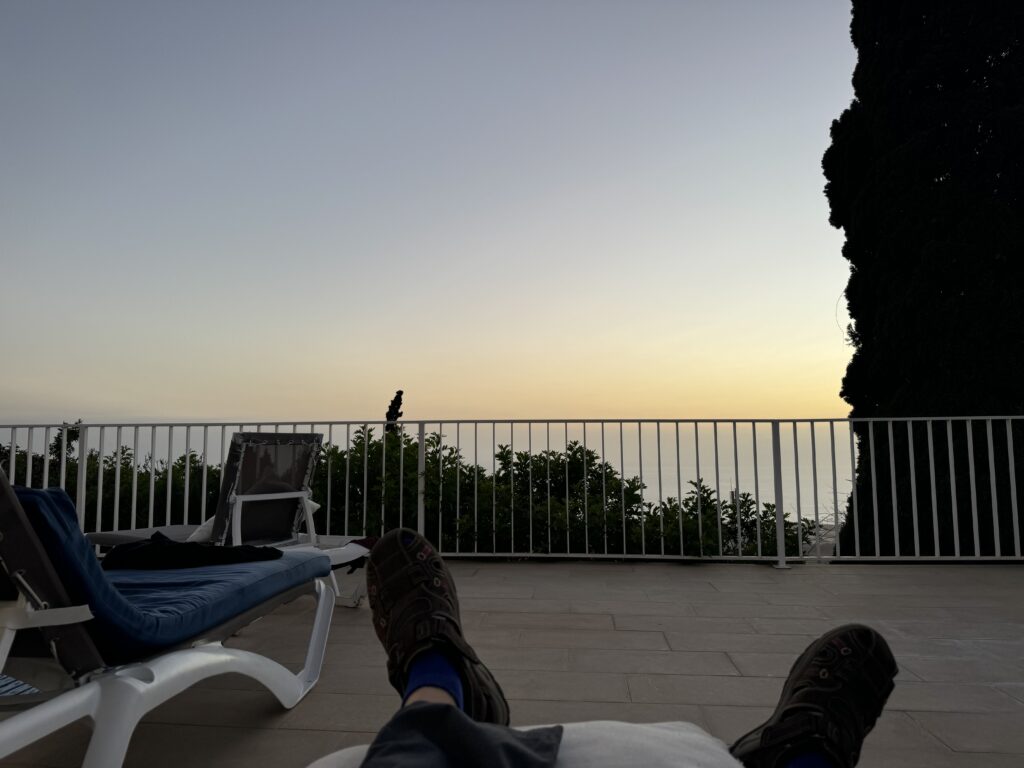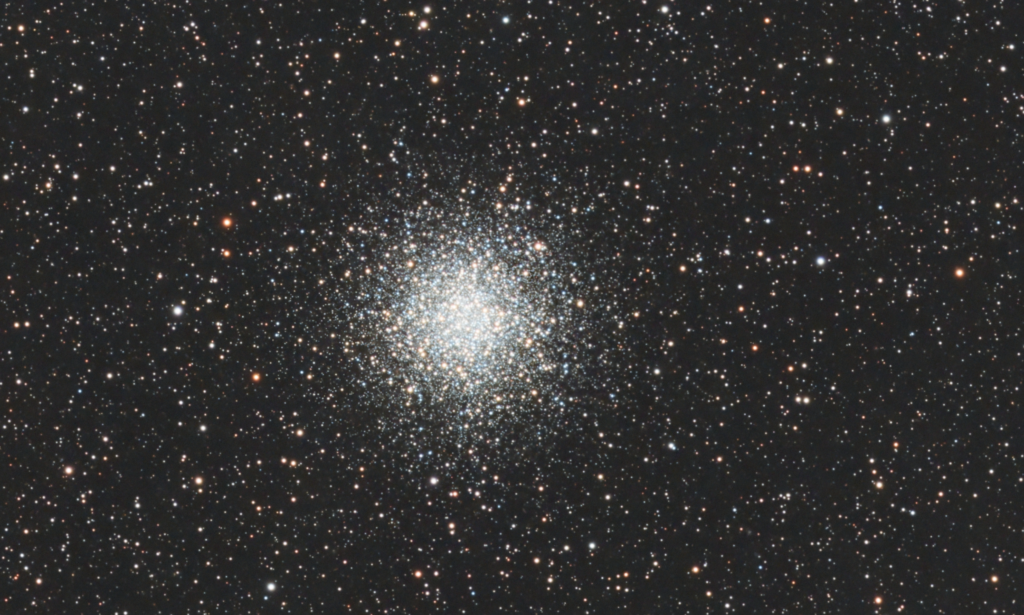21:30 – 03:24

I started off with M46 open cluster tonight which has a planetary nebula, NGC 2438 within it. The waning Moon rose at 22:17, 88% illuminated and then started to affect my viewing, however I persisted.

Next I slewed to NGC 2403, a lovely spiral galaxy in Camelopardalis and let that run for 2 hours whilst I slept.

I also set the scope to then automatically slew to M66 and the Trio in Leo. However I woke around 3am and noticed that the sky was very bright with the Moon and there was some cloud around. I turned off the scope and went back to bed. None of the data for NGC 2403 and M66 was usable.

I did take 300s darks for the previous night at -15℃ and some Flats.










